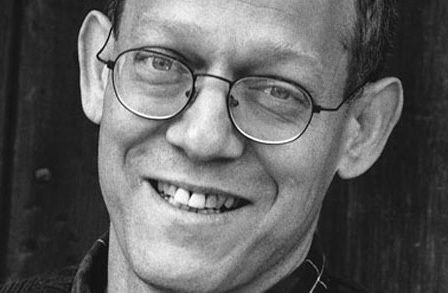 An excerpt from “On Poetry and the Necessity of Aimless Wandering,” an interview with Alan Shapiro by Amanda Newell (Poetry ’17), published by Plume.
An excerpt from “On Poetry and the Necessity of Aimless Wandering,” an interview with Alan Shapiro by Amanda Newell (Poetry ’17), published by Plume.
AN: “In his recent essay for Plume on the prose poem and other hybrid forms, Chard deNiord observes that “[i]n the irrepressible, ever-evolving, experimental process of ‘making new’ many poets today are finding the traditional line inadequate for expressing and/or accommodating their urge for adopting liminal and hybrid forms that obviate the line. Which raises the question: how can a poet write poetry without lines?”
I have noticed that much of your recent work, including several selections for this feature, are prose poems—or at least what I would categorize as prose poems. And yet, you are someone who pays fastidious attention to the traditional poetic line as well, which we can see in “Ghost Story.”
Can you talk to me about your approach to the poetic line, and take a stab at answering that question—that is, how can a poet write poetry without lines?”
AS: I don’t know if I have an “approach” to the line. The line is only “a line” in relation to a sentence or a phrase it either reinforces or interrupts. And the line itself will vary to the degree it either reinforces or interrupts that phrase or sentence. And the effect of those various interruptions and/or reinforcements will depend on the lines before and after them, on the larger patterns of relation they either depart from or approach. For me it all comes down to pattern and variation, variation that depends on pattern for its significance.
Same holds true of a prose poem. Even without the line, you still have to establish some kind of pattern that suggests its own completion, some expectation of recurrence you can upend, modify or adhere to in varying degrees at every point in order to vocalize or enact a felt change of consciousness. Every sentence is a form or pattern in and of itself—that arouses grammatical expectations, that promise certain directions and outcomes which are either realized or disappointed.
The long sentence makes the short sentence that succeeds it more conspicuous, a loose sentence which begins with a main clause and then tacks on list-like a series of dependent clauses in apposition creates an open-ended expectation that it could go on forever. Depending on context, it could enact a feeling of indeterminacy, or a feeling of excited or oppressive abundance, ecstatic noticing or crushing boredom; whereas the antithesis of a loose sentence, a periodic sentence whose dependent clauses come at the beginning, its main clause at the end, seems more conducive to increasing degrees of anticipation, to the build-up of tension, since the longer you defer or suspend a main clause the more we’ll long for it and the greater sense of fulfilment we’ll experience when it finally comes. Likewise, complete sentences potentially intensify the effect of sentence fragments; just as a passage comprised of fragments will make whatever full sentence that follows them that much more surprising or emphatic.
There are, what, six kinds of sentences one can write: loose, periodic, compound, complex, compound-complex, and simple (seven if you count the fragment). You can’t set up an effect without setting it off from something else. In a prose poem the sentence is the principal expressive resource for enacting or embodying. A prose poem (like all poetry, like all art I would argue) depends for its life blood on pattern and variation. In a prose poem that expressive tension arises primarily (not exclusively) from the interplay of sentences whereas in lineated poetry it arises primarily (not exclusively) from an interplay of sentences and lines…”
Continue reading the interview here: https://plumepoetry.com/on-poetry-and-the-necessity-of-aimless-wandering-an-interview-with-alan-shapiro-by-amanda-newell/
 “Notes for a Combing Song,” by Shadab Hashmi (Poetry ’09) , published by Life and Legends.
“Notes for a Combing Song,” by Shadab Hashmi (Poetry ’09) , published by Life and Legends.

 An excerpt from “Are You Really Sisters?” by
An excerpt from “Are You Really Sisters?” by  An excerpt from “Parameter, Commit, Push, Child,” by
An excerpt from “Parameter, Commit, Push, Child,” by  An excerpt from “On Poetry and the Necessity of Aimless Wandering,” an interview with Alan Shapiro by Amanda Newell (Poetry ’17), published by
An excerpt from “On Poetry and the Necessity of Aimless Wandering,” an interview with Alan Shapiro by Amanda Newell (Poetry ’17), published by  Karen Smyte’s story “Muscle” was a winner of the 2019 Short Short Fiction Prize and originally appeared in the Winter/Spring 2019 issue of The Southhampton Review.
Karen Smyte’s story “Muscle” was a winner of the 2019 Short Short Fiction Prize and originally appeared in the Winter/Spring 2019 issue of The Southhampton Review.  “Coyotes” by Terri Leker (fiction 17) won the 2019 New Ohio Review Fiction Contest, selected by Claire Vaye Watkins. It was published in New Ohio Review Issue 26.
“Coyotes” by Terri Leker (fiction 17) won the 2019 New Ohio Review Fiction Contest, selected by Claire Vaye Watkins. It was published in New Ohio Review Issue 26. Shannon Winston (poetry 18) has two poems in the current issue of CITRON REVIEW. Here is an excerpt from “The Spinners:”
Shannon Winston (poetry 18) has two poems in the current issue of CITRON REVIEW. Here is an excerpt from “The Spinners:” Alyson Mosquera Dutemple’s story “Prix Fixe” was nominated for a Pushcart and appears in the latest issue of FLOCK.
Alyson Mosquera Dutemple’s story “Prix Fixe” was nominated for a Pushcart and appears in the latest issue of FLOCK. Lia Greenwell’s (poetry 13) Pushcart Prize-nominated essay “Your Soul Doesn’t Need You” appears in Southern Humanities Review issue 52.4. The essay recounts a traumatic event in which Greenwell was carjacked at gunpoint, midday, at a gas station in a small town. In an interview, Greenwell discusses the different ways she has written about this trauma, the stranglehold of fear, and both the limitations and possibilities of form and genre.
Lia Greenwell’s (poetry 13) Pushcart Prize-nominated essay “Your Soul Doesn’t Need You” appears in Southern Humanities Review issue 52.4. The essay recounts a traumatic event in which Greenwell was carjacked at gunpoint, midday, at a gas station in a small town. In an interview, Greenwell discusses the different ways she has written about this trauma, the stranglehold of fear, and both the limitations and possibilities of form and genre.
